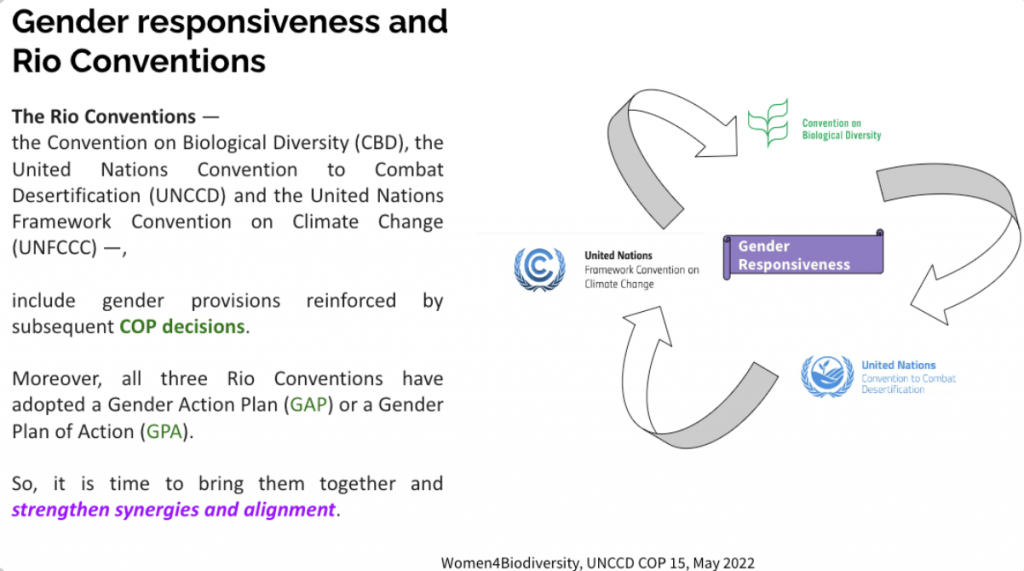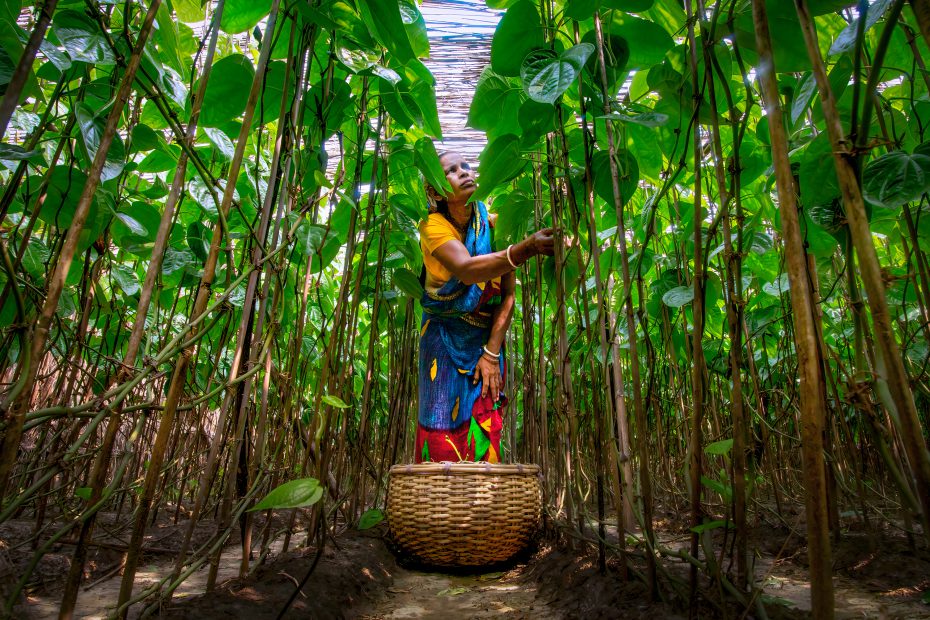Photo caption: A woman farmer in the West Bengal region of India is able to sustain her farming practices with the government’s support. Cover photo by Sourav Das.
Gender equality, restoration and land rights are interrelated issues that affect the lives and livelihoods of millions worldwide. Land degradation, caused by factors such as drought, desertification, unsustainable farming practices, biodiversity loss and climate change, threatens food security and human well-being. Women and girls are particularly vulnerable to the impacts of land degradation, as they often depend on land for their income, food production, water supply and fuel. However, they also face many barriers to accessing and controlling land, such as discriminatory laws, customs and practices, lack of education and credit, unequal pay and low levels of decision-making*. These challenges limit their ability to protect and restore land and to benefit from its resources.
According to the United Nations Convention to Combat Desertification (UNCCD), gender inequalities are pervasive regarding land, and securing women’s rights is imperative to achieve the intertwined global goals of gender equality and land degradation neutrality by the 2030 deadline**. When women have equal rights to own, inherit and manage land, they are more likely to invest in its restoration and conservation, increasing its productivity and resilience to drought. They are also more likely to use their income from the land for the health, education and nutrition of their families and communities. Moreover, women’s participation in land governance and management can enhance their voice and agency in society, and contribute to peace and stability.
Thus, gender-responsive land restoration is a key strategy to address both land degradation and gender inequality. It involves recognizing and addressing the different needs, preferences, capacities and knowledge of women and men in relation to land use and restoration. It also involves ensuring that women have equal access to information, technology, finance, markets and extension services that can support their land restoration efforts. Furthermore, it involves promoting women’s leadership and representation in land-related decision-making at all levels.
Gender-responsive land restoration can have multiple benefits for the environment, society and economy. It can improve soil health, water quality, biodiversity, and mitigate climate. It can also enhance food security, income generation, poverty reduction and social inclusion. It can also contribute to the achievement of several Sustainable Development Goals (SDGs), such as SDG 1 (No Poverty), SDG 2 (Zero Hunger), SDG 5 (Gender Equality), SDG 13 (Climate Action) and SDG 15 (Life on Land).
However, gender-responsive land restoration also faces many challenges and constraints in its implementation. Some of these include:
- Lack of awareness and recognition of the linkages between gender restoration and land rights among policy-makers, practitioners, researchers and media
- Lack of gender-disaggregated data and indicators on land use, degradation and restoration
- Lack of adequate legal frameworks and enforcement mechanisms to protect women’s land rights
- Lack of financial resources and incentives to support women’s land restoration activities
- Lack of capacity building and technical assistance for women’s groups and organizations involved in land restoration
- Lack of coordination and collaboration among different stakeholders working on gender restoration and land rights
To overcome these challenges and constraints, it is necessary to adopt a multi-stakeholder approach that involves the participation and collaboration of governments, civil society, academia and media and other relevant stakeholders. It is also crucial to adopt a cross-sectoral approach that integrates gender restoration and land rights into other relevant policies and programmes, such as climate change, biodiversity, agriculture, chemicals, water, health and education. Adopting a human rights-based approach that respects, protects and fulfills the rights of women and men to access, use and manage land in a sustainable way is needed as well.

In conclusion, gender equality, restoration and land rights are closely linked issues that require urgent attention and action. By empowering women to access and control land, and by supporting their participation in land restoration activities, we can create a more equitable, sustainable and prosperous world for all.
The time is now to take action for #HerLand #HerRights.
*Securing Women’s Land Rights for Increased Gender Equality, Food Security and Economic Empowerment

